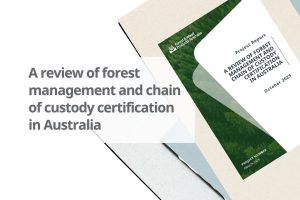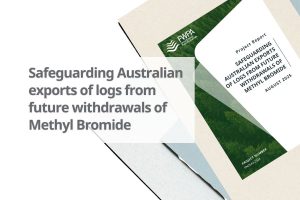Growers of spotted gum and yellow stringybark could potentially increase income from small-diameter plantation thinnings by creating “boxed-heart” posts, according to a trial supported by FWPA. However sugar gum and southern mahogany produced a lower proportion of posts of acceptable quality.
(“Boxed-heart” posts are timber posts milled to include the pith, the soft core at the centre of the log.)
Jon Lambert and Dean Severino tested approximately 80 logs of each of the four species in plantations their business manages – and also trialled four different drying treatments – and measured the proportion of acceptable-quality posts after a year’s drying.
Posts were deemed to be of unacceptable quality if they had splits of over 5 millimetre on the ends or any surface. Across all four drying methods, the following proportion of posts made the grade:
- Spotted gum – 30 per cent acceptable quality
- Yellow stringybark – 24 per cent
- Sugar gum – 13 per cent
- Southern mahogany – 8 per cent
The pass rate was even higher at 50 per cent for spotted gum that was end waxed and plated before being dried.
The posts produced could be used in a range of feature products such as bridges, boardwalks, playground equipment, parks and gardens and a range of constructions in marine and tourist areas. Squared off and sold green, they could also be sold for use in natural hardwood fences.
Next steps
Mr Lambert said it appeared that splits were most common on the face exposing the largest amount of inner heartwood, however this was not formally measured as part of the study.
“We believe that even better results could be achieved by sawing that centres the pith more accurately, to evenly distribute stresses that could otherwise lead to splitting,” he said.
“The other thing that would be logical is the development of specific diameter classes, and guidelines around log selection, focusing on log straightness and minimal exposure of heartwood.
“The recovery of posts is very much dependent on careful selection, sawing and drying. To an extent, it’s also dependent on the degree of splitting deemed acceptable for particular applications.
“For example, some of the posts we rejected because they had a split on one face might be usable in situations where not all faces are exposed, for example a garden border product.
“We believe that improved genetics will also led to a significant improvement in the results by providing better form trees, as will refining the sawing and drying processes used.”
The final report will be released in late January 2018.



